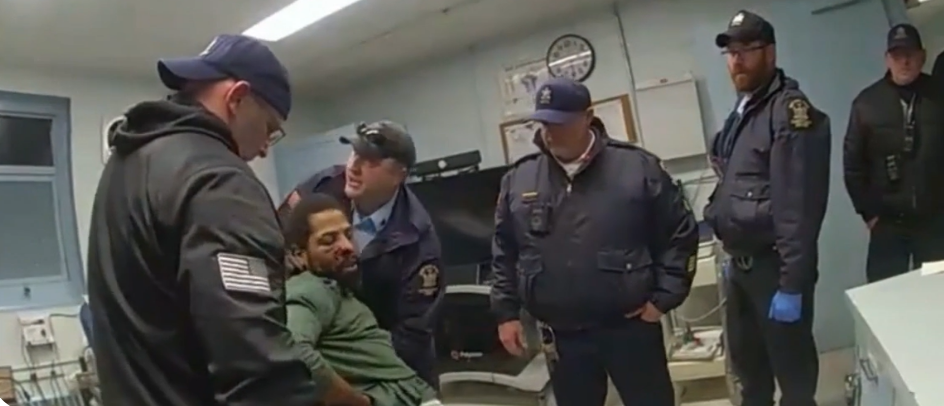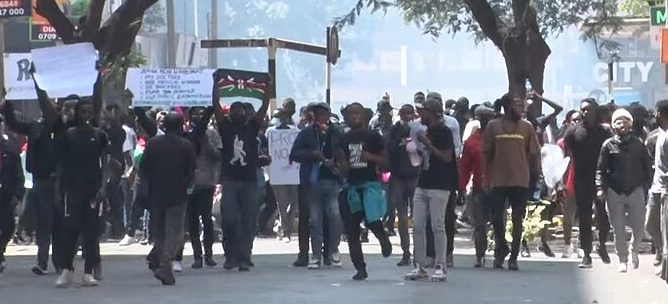[Law Of The Land]
Trayvon Martin’s parents seek justice for a son killed for walking while Black.
The Court gutted Voting Rights. Paula Deen is caught using racial slurs. Yet, the U.S. Supreme Court gutted both affirmative action and decided essential protections within the Voting Rights Act were unconstitutional.
When Chief Justice Roberts read decision in the Shelby County voting rights case the courtroom was graveyard silent. He spoke of the lives lost and brutal injustices that led to the passage of the Voting Rights Act of 1965. However, the country had changed, he said. Congress was wrong to re-authorize these voting protections in 2006. Section 4 of the Act, the part which requires many Southern states to seek pre-clearance from the U.S. Attorney General, based on a certain formula, was wrong.
The formula was old. Congress must start over with a new formula. The chances of this happening are nearly nonexistent. Given the past failures of a conflicted Congress, the Court had torn away the most powerful part of the Act and left a battered shell for a distracted Congress to retrofit. The same Congress unable to complete its own agenda has been told to pass voting legislation only passed in 1965 because people were dying just to vote.
Like so many listening that day, a sense of doom grew with each word. Despite 15,000 pages of evidence that people of color still needed to be protected, a 5-4 majority believed people of color must once again prove their vulnerability to racism, bigotry, and the machinations of majority politics.
Now, expensive lawsuits must be brought to prove harm after a stolen election is over. Before, under Section 5, the burden was on the local government to prove voting changes were harmless.
Justice Thomas wrote that he would completely abolish all of Section 5, not just the formula pertaining to certain States. Then again, Justice Thomas described affirmative action as insidious and racial engineering. To him, college admissions officers are doing students of color an injustice. Black and Hispanic student achievement are harmed by affirmative action policies like those in the case of Fisher v. University of Texas.
Abigail Fisher challenged her denial of admission to the University of Texas-Austin as race discrimination. Although the school takes into account a number of factors, including race, Fisher claims it was only her race that prevented admission. Although Texas created its admissions’ policy based squarely on compliance with an earlier Michigan ruling, this recent Texas decision once again places affirmative action in jeopardy.
In that early Michigan case, a White applicant, Barbara Grutter claimed she was denied admission to University of Michigan’s law school due to her race. The Court in Grutter v. Bollinger ruled race could be part of admissions, as long as it was only a part, and not the sole reason.
So, Texas used race as a part and not the sole reason. Texas allows the top 10% of all high school students to attend the college. Then, those not admitted into the top 10% may be selected based on personal factors such as whether the applicant is an immigrant or a child of a single parent or poor or a person of color. Race is only one part; not the sole reason.
However, now race as only one factor may be unconstitutional. The Court’s Fisher decision is disappointing. But, it’s not an outright disaster. The lower court is supposed to review the case and decide if there is any other workable alternative that creates diversity on campus without involving r-a-c-e at all.
Certainly, this non-race admissions policy may be challenged as some clandestine affirmative action. Either way question emerge. How many students of color are needed to provide diversity? Since the Court allows affirmative action in order to bring diversity to the education of White students then students of color are playing a precarious role.
In other words, Universities are expected to fix a festering race discrimination problem without using the word “race” and without making a White applicant sense there is “reverse discrimination” even when none exists and create enough diversity to provide an educational benefit for White students while preventing Black students from feeling isolated and marginalized.
In the midst of this struggle, admissions officers are called benign slave-holders by Justice Clarence Thomas. He would dismantle all affirmative action programs. Comparing it to slavery and Jim Crow-era segregation this beneficiary of affirmative action believes it as harmful to Blacks and Hispanics as slavery.
Ironically, affirmative action, which benefited Justice Thomas, has also given him the power to end it forever. It is also ironic that the Equal Protection clause, which was enacted solely for African-Americans, is now used against them. Diversity, which was meant to focus on people of color, is now meant to benefit the education of White students.
In ruling to decide the fate of affirmative action another day, the U.S. Supreme Court did not ‘kick the can’ down the road. The Court kicked the future out of this policy. Shelby County, Alabama, with its troubled history and racial present-day, can determine the level of progress needed to end voter protections. Affirmative action will soon be an antiquated phrase. Its a post-race society no matter the reality.
If the direction of the Court does not change, the Trans-Atlantic Slave Trade will become just a bad admissions policy.
Gloria J. Browne-Marshall is a legal correspondent covering the U.S. Supreme Court. She is an Associate Professor of Constitutional Law at John Jay College in New York City and author of “Race, Law, and American Society: 1607 to Present.” @GBrowneMarshall






